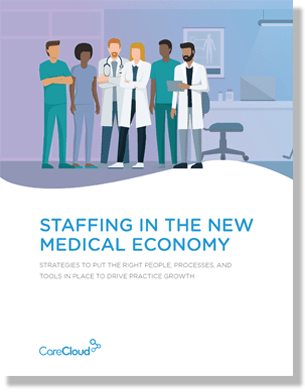When the Affordable Care Act was signed into law in 2010 hundreds of software companies sprang forth ready to take advantage of the government’s push for health IT solutions. But now, the list of companies is shrinking due to a recent upswing in acquisitions and mergers.
This was inevitable, as the smartest companies in any industry always rise to the top by acquiring their smaller counterparts. Unfortunately, a decrease in health IT vendors could prove detrimental to physicians.
Actually, there are four main reasons why physicians should be rooting for health IT companies to strive for internal growth rather than searching for other companies to acquire. Today, we analyze them all.
Fewer Options, Increased Pricing
Unless a steady stream of software vendors emerge to replace those absorbed by larger companies, physicians aren’t going to have as many software options to choose from.
Choices are crucial in a medical industry where physicians practice in such a wide array of environments. On one end of the spectrum are solo practitioners, while on the other end are physicians working alongside hundreds of colleagues at mega-hospitals. Within that spectrum lay a broad range of specialties, each asking for different capabilities from their health IT vendors.
Another problem with fewer options is increased pricing. Not that anyone vendor will get to John D. Rockefeller status – there are laws preventing that – but, as in any industry, competing vendors equate to a reduction in pricing.
As mentioned before, physicians work in all sorts of environments, so they need options at many price points. If a particular physician can’t find just the right price point, it is unlikely he or she will ever get to reap the benefits health IT software has to offer.
Mish-Mash Software
One reason software companies acquire competitors is to gain capabilities they don’t already have. For example, a large EHR company may acquire a smaller company offering first-rate practice management software to expand its services. It seems like a suitable solution to acquiring capabilities, but the two solutions must then be reprogrammed to work together.
This can prove exceedingly difficult, and sometimes creates a gap between the two software solutions that can never be entirely bridged. Physicians looking for a completely integrated suite of practice software may be disappointed by such offerings.
Companies that grow internally and program all of their own components normally don’t have these gaps.
Less Innovation
With fewer software solutions on the market, health IT developers have less initiative to innovate because there aren’t as many competitors driving change. As innovation slows, it will take software companies longer to create better EHRs or PM systems.
In the past, competition has brought out the best in developers and has led to some of the most groundbreaking advances in health care. Decreased competition may result in companies feeling more comfortable resting on their laurels.
New Software Means Adjustments
When one health IT software company acquires another, the physicians using the software of the acquired company are usually left to adjust. A solution, which may have taken staff months to learn, no longer exists.
Even if the purchasing company moves physicians using the purchased company’s software to their solution for free, there are still costs associated with adjusting to entirely new software. This is without taking into consideration whether or not the new solution is as good for that particular practice as the original.
Although natural, and probably necessary, too many mergers and acquisitions amongst health IT companies may leave physicians feeling the effects. We’ll have to see in which direction the industry shifts. Hopefully, it isn’t the outcome that leaves doctors scrambling to adjust.



